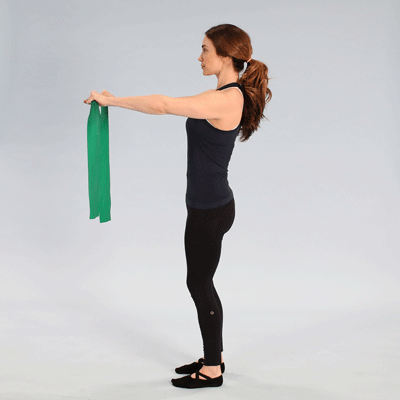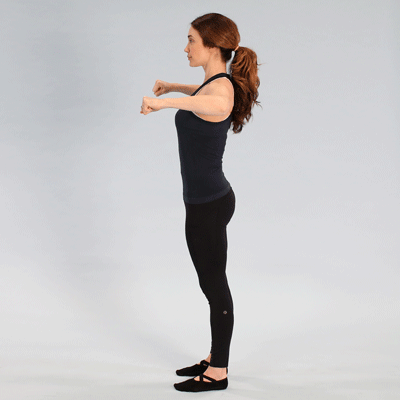Finding the right moves for your changing body can turn “ow” into “ahhh.”
Nausea, back pain, pubic bone pain, weakened posture, the list goes on! Pregnancy is an incredible and rewarding journey but your body goes through a lot of changes on the way.
Back pain can come in many different forms and affect the lower back, sacroiliac joint, and upper back. The elevated relaxin hormone and your body (and the baby’s body) adjusting as birth approaches contribute to your pelvis shifting and feeling different.
In my second pregnancy I quickly discovered that my pelvis was stretching and shifting even more than during my first pregnancy, causing sharp pains in the lower back area and front of the pelvis. This happened at different times, mostly starting from the beginning of the second trimester.
In doing Pilates and fitness for many years, I thought, “Hey I’ve got this!” There was a catch though.
You see, in my regular teaching I’d advise clients to strengthen their glutes, core, and posture and do some specific stretches to help this problem (once they had established from a doctor or physical therapist the exact condition).
But in pregnancy, when this really flared up for me, the regular glute exercises caused me more pain due to the shearing and movement of the tailbone area. Additionally, I couldn’t work my core except my pelvic floor, as core work during pregnancy isn’t recommended.
And many of the back strengthening exercises and stretches I normally relied on were done lying on the tummy or in other positions not conducive to pregnancy!
So I started to explore movement further and modify what I knew could work to come up with pregnancy-safe exercises to help this back pain.
Whenever possible I recommend you do all of these exercises in all four categories (upper back, pelvis, lower back, glutes) to ensure you’re giving your body the best chance at gaining strength and relieving pain holistically. Back pain needs to be addressed by thinking about the surrounding areas not just the area in pain.
If that isn’t always possible you can pick and choose what feels right for you on different days too. Gentle movement and appropriate stretching will in most cases feel better than doing nothing.
Note:
I suggest you visit your doctor or physical therapist, preferably someone who specializes in pregnancy, to check your pelvis and general strength in order to assign you exercises specific to your needs.
Here’s my pick of Pilates-based back pain exercises that can help you during pregnancy. These can be done throughout all trimesters.
TheraBand arm pull
- Stand or sit holding a TheraBand shoulder distance apart, arms stretched in front of chest.
- Keeping your arms straight as you exhale, pull the band apart while maintaining height through arms, squeezing your shoulder blades together.
- Control the band back to start position.
- Do 10 to 15 reps.
Arm rows
- Standing or sitting, bring both arms up from your side in a 90-degree position, making fists pointing forward.
- As you exhale, press both arms forward as if you are moving through water or resisting the movement, making sure you keep shoulder blades together.
- As you inhale, pull arms back to start position, maintaining a strong squeeze through your arms, upper back, and shoulders.
- Do 10 to 15 reps.
Pointer
- On hands and knees, extend one arm and the opposing leg along the floor and lift to form a straight line with your body, holding for a few seconds.
- Maintain hip stability and shoulder stability.
- Return to floor carefully and repeat other side.
- Do 10 reps each side.
Glute stretch
- Begin sitting on a chair or the floor.
- Cross one leg over the other, gently pressing your knee out to the side until you feel a stretch in your butt and hip.
- Keep both sit bones level with each other.
- Hold for 20 seconds each side.
Lower back stretch
- Sit on the floor, legs straight out in front of you. (If you’re toward the end of the third trimester and your tummy is bigger, you can separate your legs apart so you’re seated in a “V” position, but not too wide.)
- Sit tall, inhale, arms reaching forward.
- Exhale, reaching forward from your hips till you feel a stretch at the back of your legs and lower back.
- Keep knees on floor and do not slouch.
- Hold for 20 seconds.
Clams
- Lay on your side, supporting your tummy with a pillow if needed.
- Place your hand or a pillow under your head.
- Bend your knees so your heels line up with your hips, keeping your chest open.
- Pressing your heels together, inhale then exhale opening your top knee away from bottom knee.
- You should feel your hip and glute working. Try to keep your thighs relaxed.
- Only go a small way up if your lower back is sore.
- Do 10 to 20 reps each side.
Leg raises
- Place hands under shoulders, knees under hips on all fours.
- Inhale, stretching one leg back along the floor.
- Exhale and lift your stretched leg off floor slowly, squeezing your butt muscle with foot pointed.
- Lift and lower your leg without touching the floor, working into your butt each time.
- Keep hips and torso steady.
- Only move up and down a short range if your lower back or pelvis is sore.
- Do 15 reps each leg.
I hope these help with your back pain and I wish you well on your journey! Always listen to your body and rest when needed.
Vanessa Bartlett is a presenter, writer, life coach, and holistic Pilates instructor with 20 years of experience. She has received an award for innovation in healthcare and loves being a mum while helping clients achieve a balanced body and mind after going through adrenal fatigue. Visit www.vanessabhealth.com to get in touch or do one of her programs.




